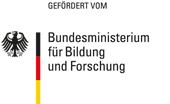A Comparison of Methods to Analyze Aquatic Heterotrophic Flagellates of Different Taxonomic Groups FLUSSHYGIENE | Publikation |
Vorschau
Heterotrophic flagellates contribute significantly to the matter flux in aquatic and terrestrial ecosystems.Still today their quantification and taxonomic classification bear several problems in field studies,though these methodological problems seem to be increasingly ignored in current ecological studies.Here we describe and test different methods, the live-counting technique, different fixation techniques,cultivation methods like the liquid aliquot method (LAM), and a molecular single cell survey calledaliquot PCR (aPCR). All these methods have been tested either using aquatic field samples or culturesof freshwater and marine taxa. Each of the described methods has its advantages and disadvantages,which have to be considered in every single case. With the live-counting technique a detection of livingcells up to morphospecies level is possible. Fixation of cells and staining methods are advantageousdue to the possible long-term storage and observation of samples. Cultivation methods (LAM) offer thepossibility of subsequent molecular analyses, and aPCR tools might complete the deficiency of LAMin terms of the missing detection of non-cultivable flagellates. In summary, we propose a combinationof several investigation techniques reducing the gap between the different methodological problems.© 2017 Elsevier GmbH. All rights reserved.
Zum Produkt
Verweis: https://www.sciencedirect.com/science/article/pii/S1434461017300378
Ansprechperson
Prof. Dr. Hartmut Arndt
M. hartmut.arndt@uni-koeln.de


 English
English



